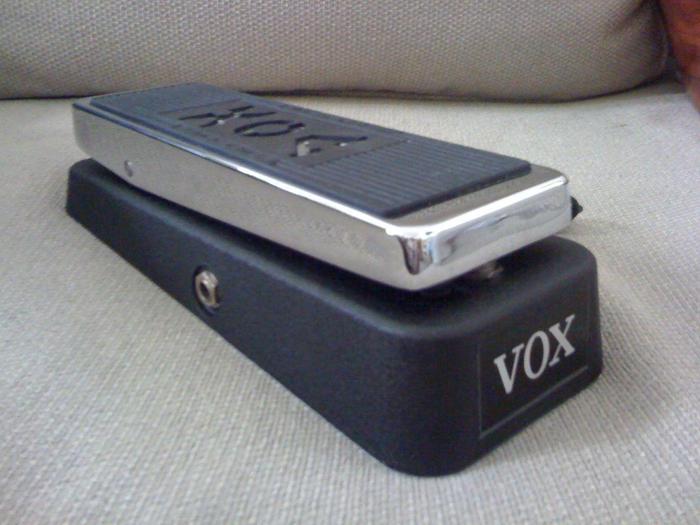

These combinations seem to be the most prevalent but others are possible.Ī 100KΩ potentiometer controlled the sweep of frequencies boosted by the Vox V846 Wah-Wah.


V846 pedals produced in America by Thomas Organ might incorporate either the "Stack of Dimes - 03" or the TDK 5103 inductor. Many late sixties Vox V846 wahs produced in Italy by EME (Eko) and JEN utilized the "Trash Can" inductor while some seventies era Vox Wah pedals from JEN had the Fasel inductor. Vox wah expert Geoff Teese of RMC Custom Pedals has reported that two versions of the "Halo" inductor were produced for Thomas Organ, each with a different ferrite core and consequentially, somewhat different audio reponse. It gets its name from the silver ring-shaped clip that holds the assembly together.
Vox amps pedals wah v847 plus#
T he Clyde Mc Coy plus many early Vox V846 Wah pedals utilized the highly revered "Halo" inductor, as shown in photos above. It is possible to find any of the five styles of inductors in a Vox V846 Wah pedal. These harmonic artifacts affect the tone of the pedal. This core saturation will create harmonics in the audio output not found in the original signal. In simplest terms, core saturation happens when the current in the coil exceeds the ability of the ferrite core to accept any more magnetic flux. Differences in the design of their ferrite cores led to significant differences in tone caused by a electronic phenomena called "core saturation."Ī ferrite core inductor is comprised of a coil of wire wrapped around an iron or "ferrite" core. As all shared a value of 500mH, one might think these inductors should all sound about the same but this was not the case. These inductors were sourced from five different vendors and were critical to the tone produced by the pedal.

The five styles of 500mH ferrite core inductors pictured above were used in Thomas Wah-Wah and Cry Baby pedal production. Let's take a look at how these parts affect the tone of a wah pedal. While any of the components used to construct the pedal may affect performance, two parts are responsible for most tonal differences: the 500mH ferrite core inductor and the 100kΩ control pot. Tonal Differences Within V846 Wah Productionĭespite the fact that all Clyde McCoy, V846, Vox King Wah and Thomas Cry Baby pedals were constructed from the same schematic, significant tonal differences may be heard between pedals. V846 production was then split between JEN and the Thomas International Corporation facility in Chicago, IL. By the late seventies, the Thomas facility in CA was shut down. By the early seventies, production was divided between JEN and Thomas Organ in California. About a year later it was again shifted to JEN of Pescara, Italy. By mid 1967, production was moved to EME (Eko guitars) in Recanati, Italy. The V846 Wah-Wah was initially manufactured in early 1967 by Thomas Organ in Sepulveda CA. Print ads featuring the Vox Wah-Wah for guitar commenced in May 1967. They dropped their association with Clyde McCoy and renamed the pedal the V846 Vox Wah-Wah. In a press conference covered by Billboard Magazine on April 8, 1967, Vox recognized that the true sales potential for the Vox wah was for guitar. Thomas Organ offered the "Clyde" pedal in their Vox Ampliphonic band and orchestra product line, initially targeting it for use with amplified brass and wood wind instruments rather than guitar. McCoy was a jazz musician that utilized a cup mute to create a wah effect on his trumpet. Thomas Organ completed their first wah-wah pedal, the Vox "Clyde McCoy Wah-Wah" in late 1966.


 0 kommentar(er)
0 kommentar(er)
